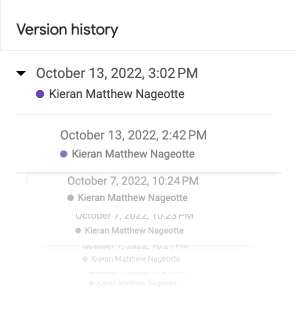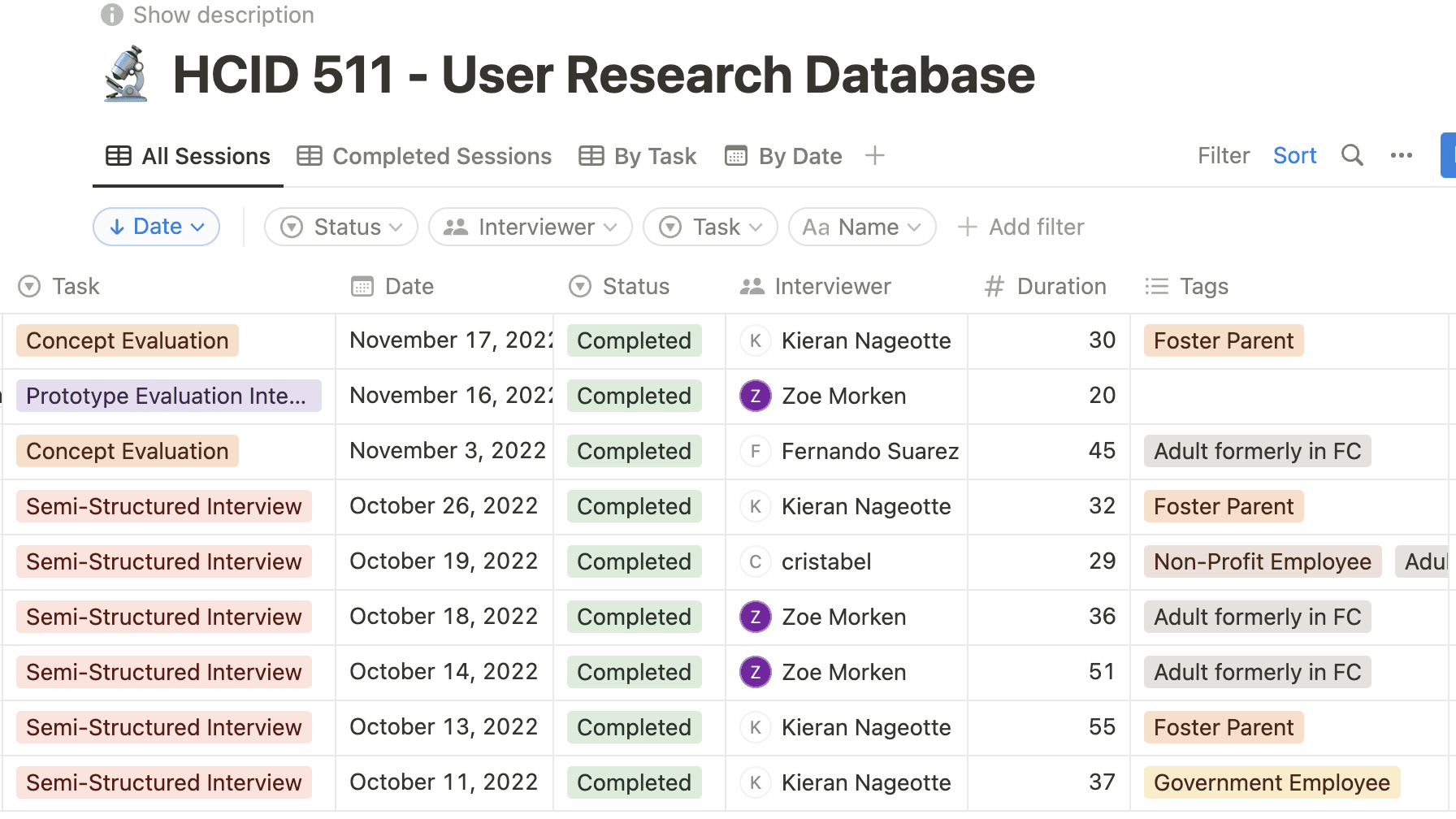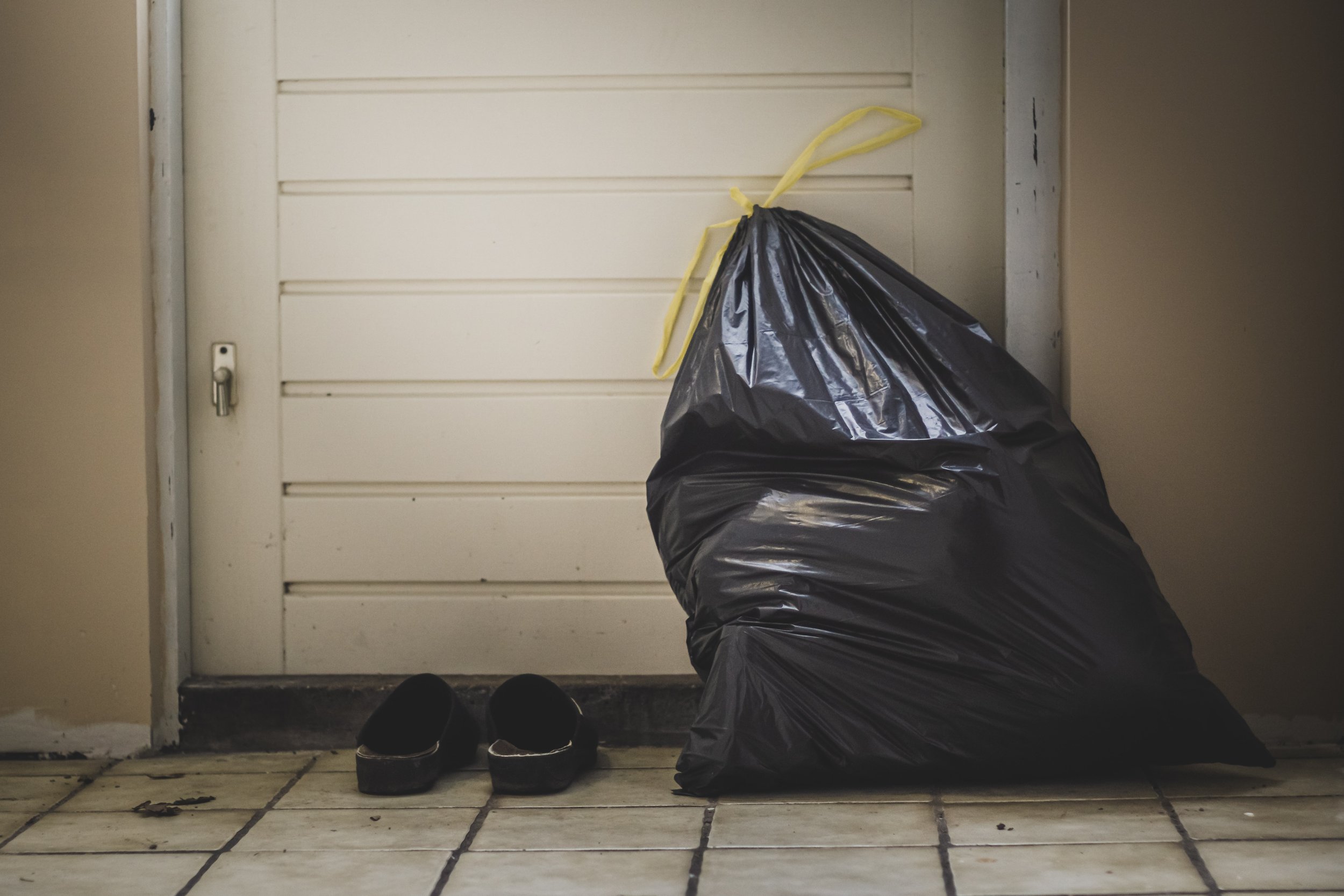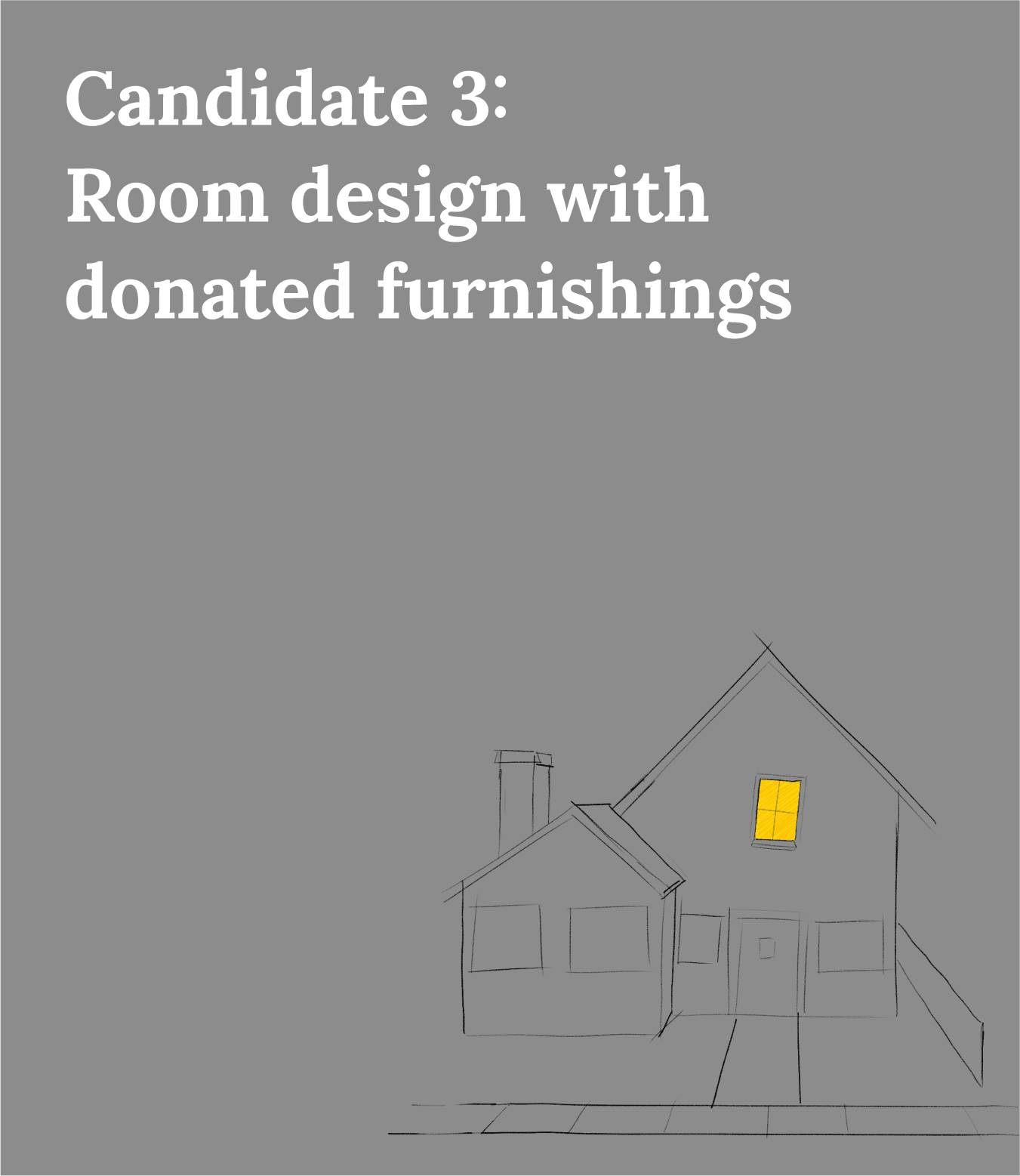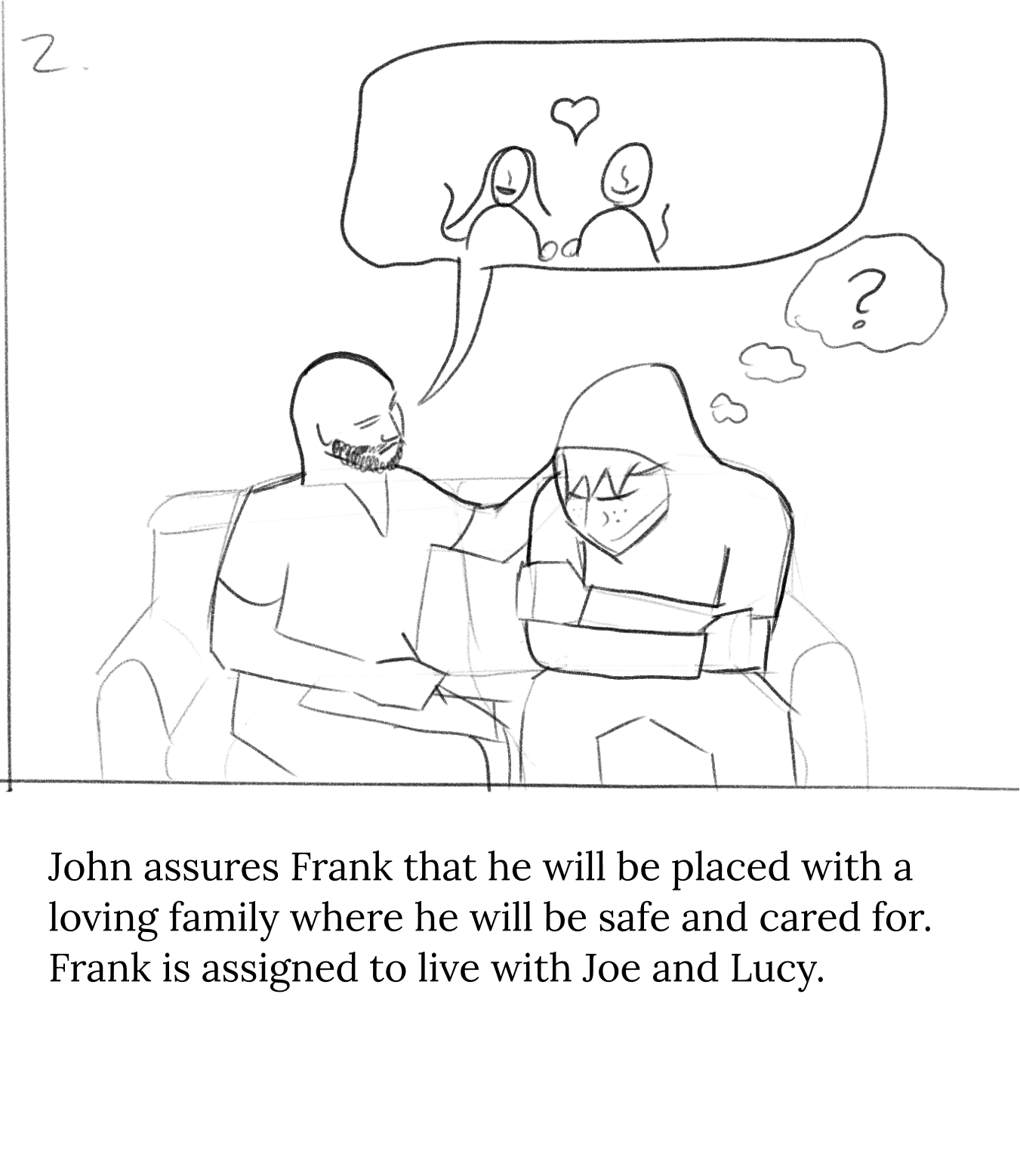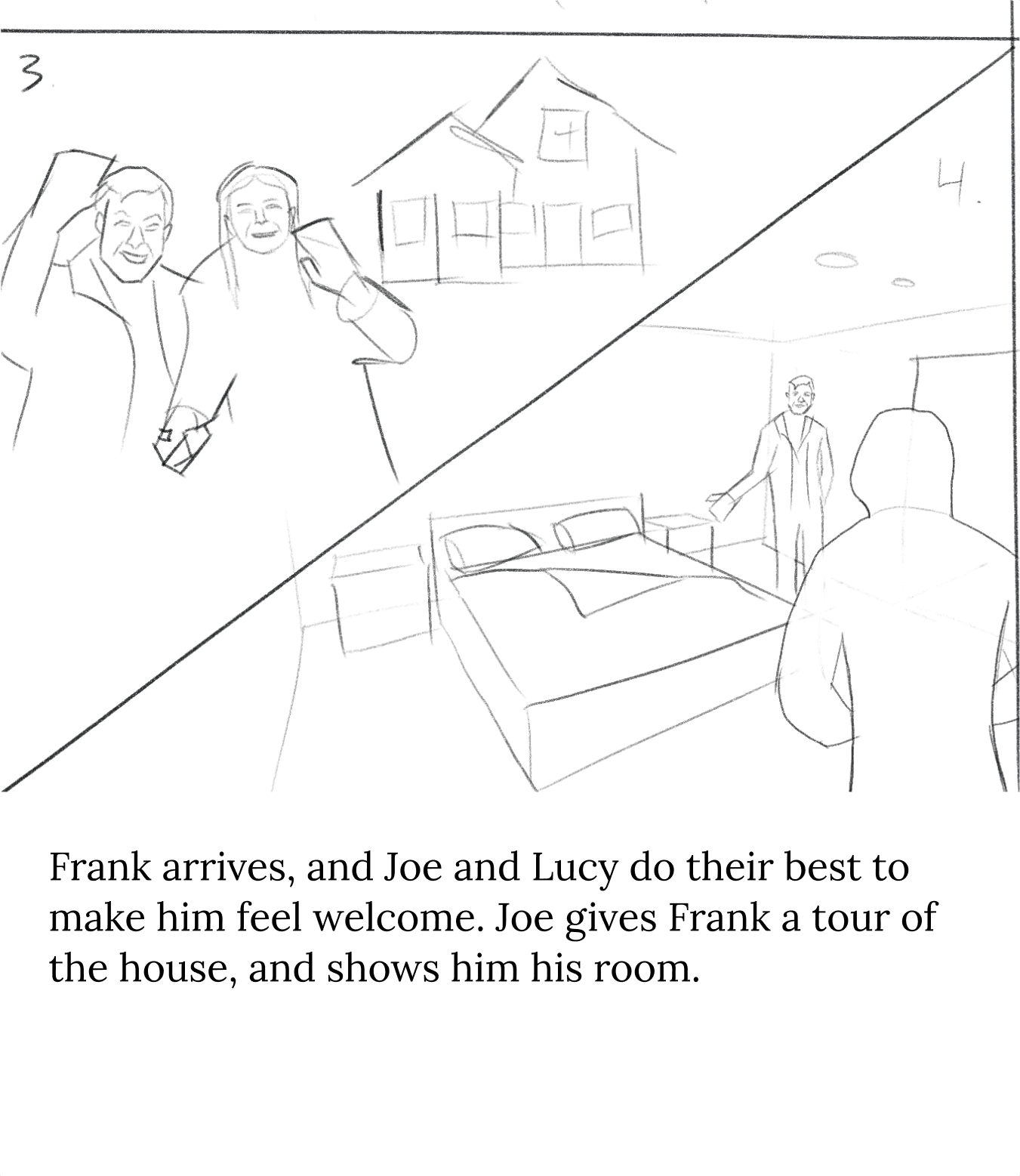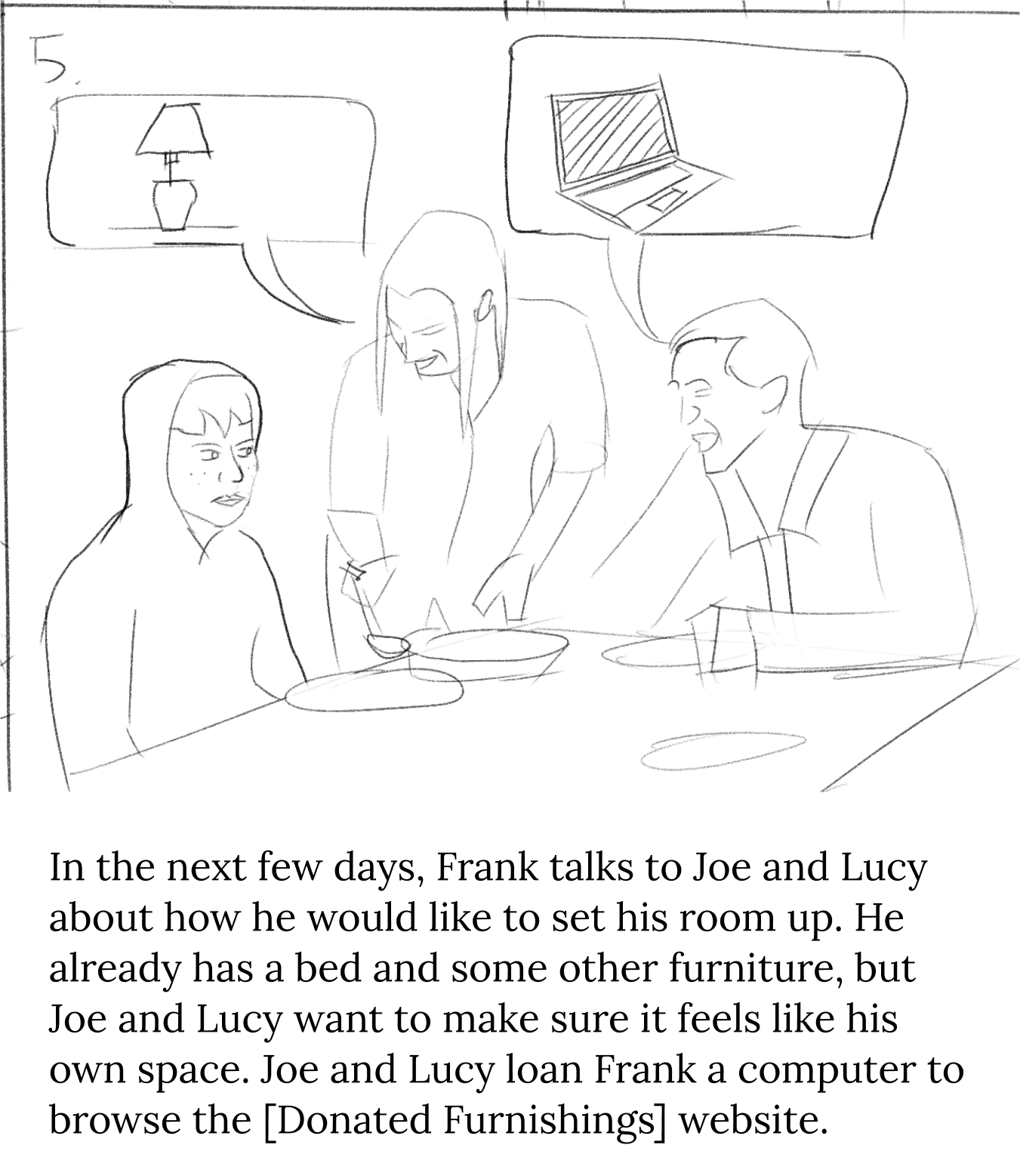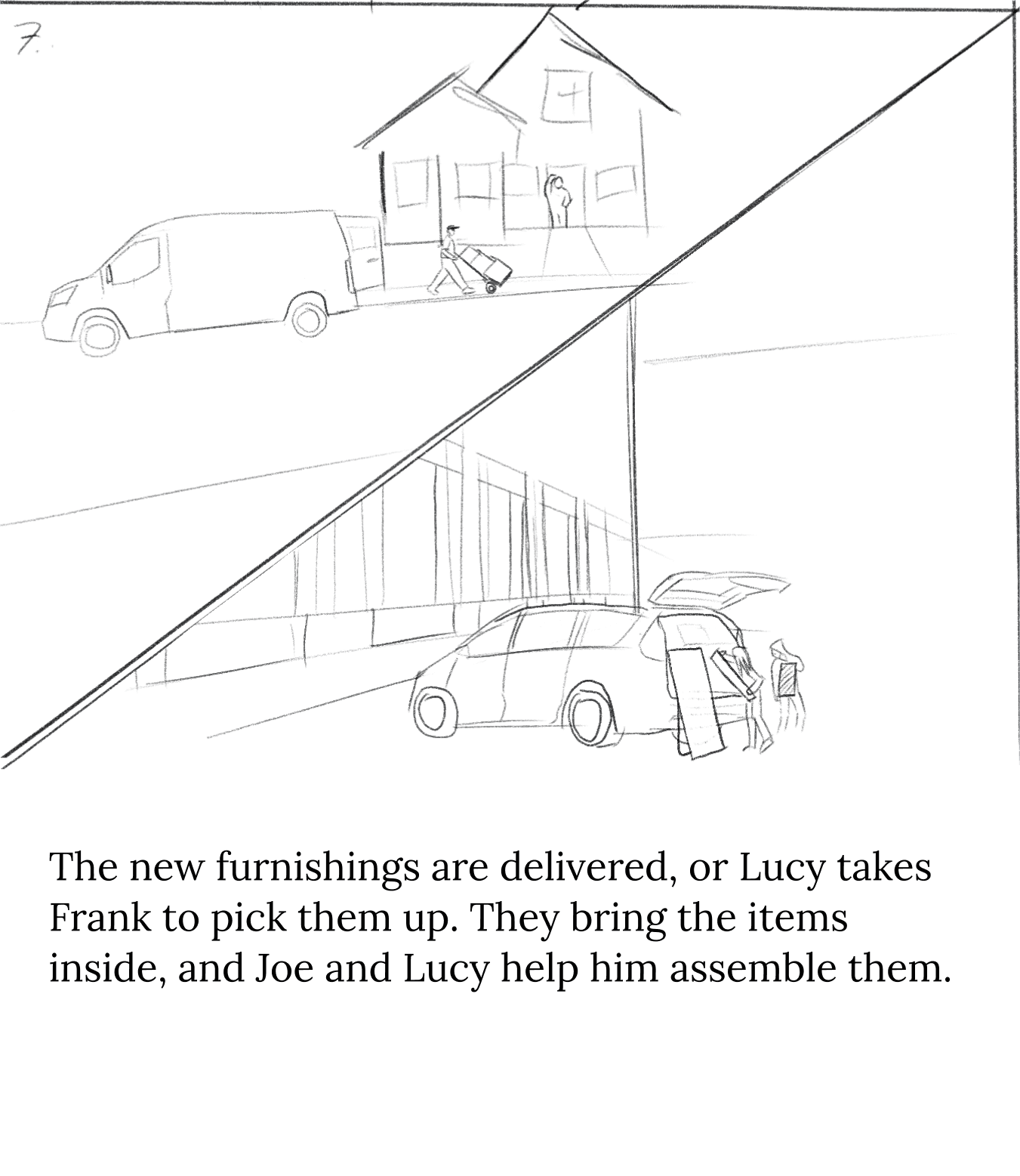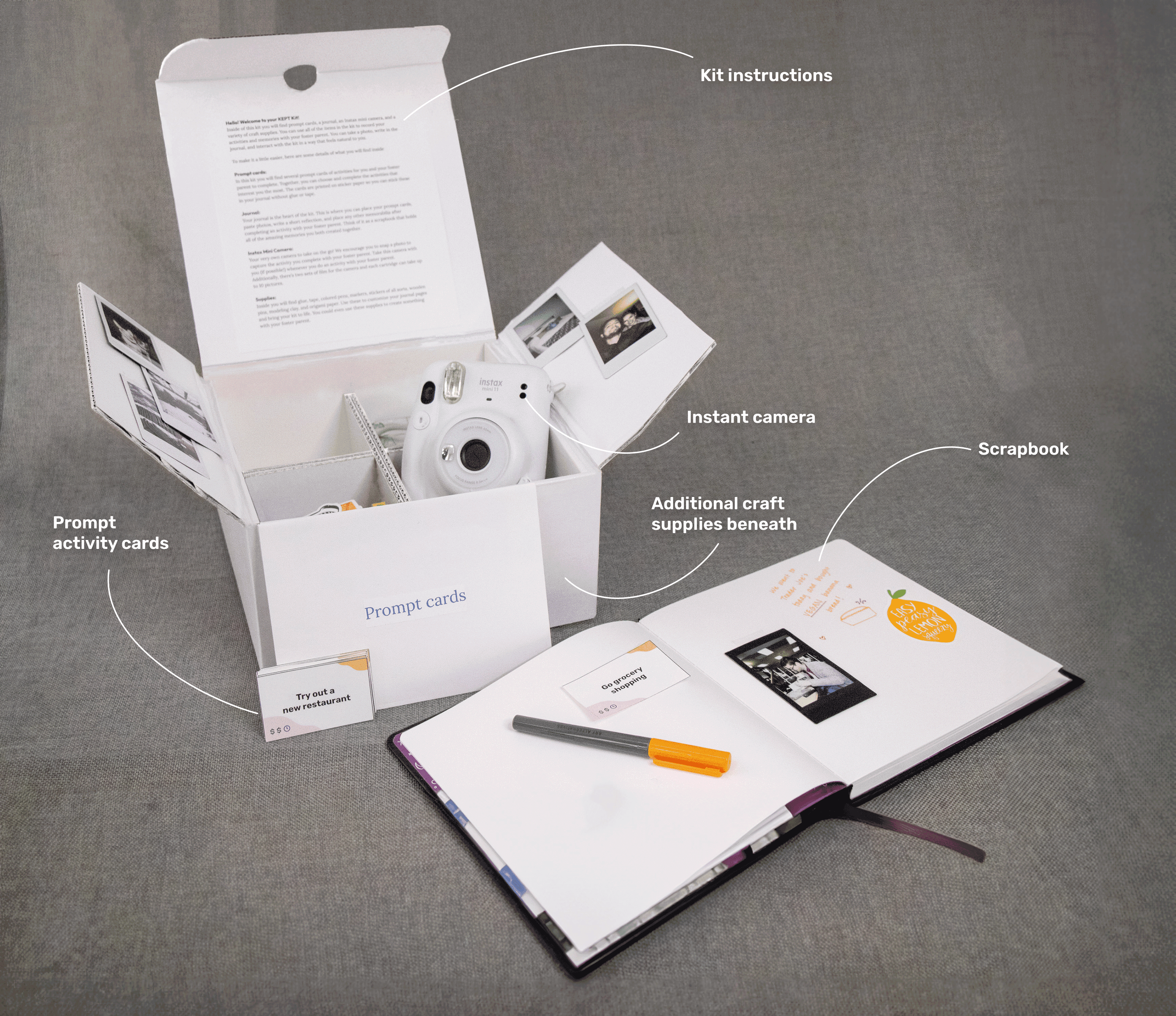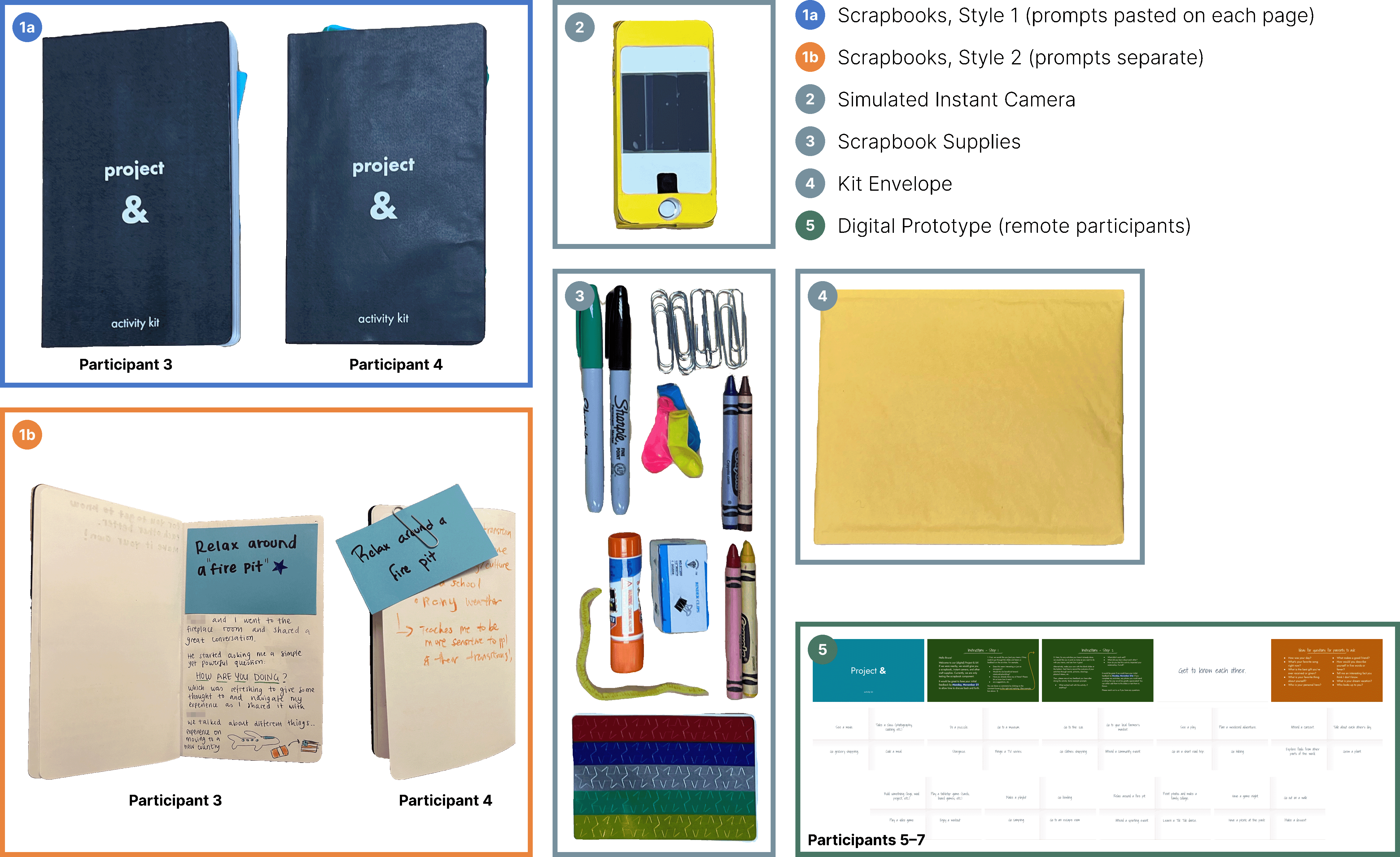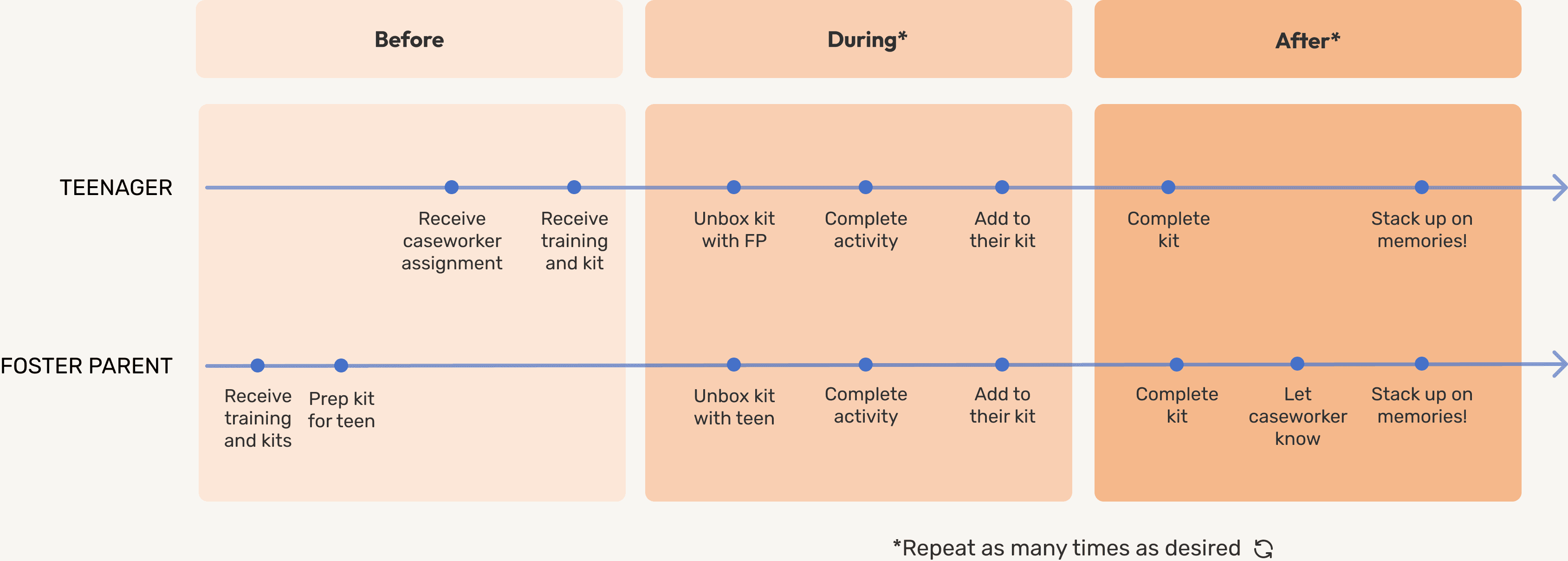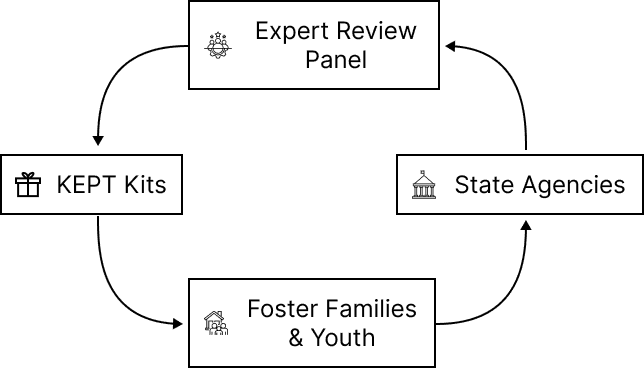KEPT Kits
Helping youth in foster care build permanent relationships with foster families
Duration
10 Weeks
(Sept. – Dec. '22)
Team
Zoë Morken
Cristabel Otero
Fernando Suarez Martinez
My Contributions
Led many design sprints
Led physical prototyping
Co-led design system spec
Recruited all foster parents
Facilitated 4/9 interviews
Deliverables
Med-fi physical prototype
Design system spec
Final design presentation
Poster presentation
Problem
Teens in foster care struggle to find a permanent, nurturing family
Finding families for children is difficult given the shortage of foster families. For teenagers, this is even more of a challenge. For youth aged 13 and older, only 58% are placed with families compared to 95% of children 12 and younger.¹ Many families don’t feel equipped to deal with a teenager who may be traumatized.
Response
An adaptable system to help foster parents and teens get to know one another initially, and build a deeper relationship over time
KEPT is a concept program, to be implemented by state foster care agencies. It consists of a system of personalized kits for teens in foster care to bond with their foster families, continuously improved based on feedback and expert guidance.
My Role
Ideation and Alignment
Championed unfamiliar ideation techniques and strategies for down-selection / convergence
Prototyping
Created various low-fi physical prototypes for concept evaluation and user testing, all within our strict zero-dollar budget
Design System
Collaborated with a teammate to develop and document our design system
UX Writing
Edited a variety of texts for clarity, tone, and grammar.
Design Strategy
Identified key stakeholders, desired outcomes, and critical moments. Conducted in-depth secondary research, which shaped the final design direction.
User Research
Co-designed our interview guide, improving precision and better aligning with research strategy. I also facilitated the plurality of our interviews
Context
This was my first big studio project during my Master’s studies. Being new to HCI but equipped with a design background, I felt determined to showcase my skills and make a lasting impact.
Project Brief
Design for Nomadism + Migration
I want to work on problems here
By Choice
Vacationers, Digital Nomads, etc.
By Force
Refugees, Prisoners, etc.
Why People Migrate
We decided to focus on
Defining the Problem
Secondary Research
First, I had to admit I didn't know anything about foster care. I wanted to be sure I approached this sensitive topic with appropriate care. Immersing myself into secondary research, I sought resources ranging from studies on Google Scholar to the Teen Vogue series on foster care. I worked to familiarize myself with the patchwork US foster care system, and to learn about the challenges youth face in foster care.
It was during this phase that I first became acquainted with the concept of ‘permanence’ (more on that later).
Initial Hypothesis
Based on an initial literature review, we believed addressing school mobility could significantly improve educational outcomes for kids in foster care, thereby also improving other outcomes.
Assumptions
Academic struggles are a primary concern
Former youth in foster care would readily share their experiences.
A small intervention in this area could actually help address academic disparities and making a positive impact on the lives of children in foster care
Generative Research
Study Plan
I was eager to immerse myself in UX research. Despite this being my first time crafting a formal study plan, I made significant contributions to the task. I took an active role in shaping the research questions, suggesting that my team apply the design challenge framework from Gjoko Muratovski's Research for Designers. This approach helped us in formulating a clear Research Problem, Research Statement, and Research Question.
Example
"What were your foster kids' educations like?"
"What were some of the challenges your foster kids faced in their education?"
The benefit was a more focused and efficient research process, as the research question directly drove our methodology for data collection and analysis. We also designed a probe task to get our participants thinking about their educational background.
Stakeholder Analysis
I was the primary author of our stakeholder analysis and its representative stakeholder map. This exercise was mostly for our team's internal use, but it allowed us to quickly identify and fill gaps in our knowledge of the system.
Creating the stakeholder map also helped identify what types of people we would try to recruit for interviews. For instance, we didn't realize at the outset how important family court judges are to the foster placement process, so we decided to interview one.



Stakeholders to Interview
Conducting Interviews
I had prior interview experience from my 5 years designing physical products for diverse clients and manufacturing stakeholders. But this was my first time conducting interviews for a UX-specific project. I was pleased to find that the skills I learned in my previous work experience transferred well to this context.
I facilitated the plurality of our interviews
Summary: My Research Contributions
Refined research strategy using design challenge framework from Gjoko Muratovski's Research for Designers
Co-designed our interview guide to improve ambiguous questions and better align with overall research strategy
Recruited all our foster parent interviewees and others
Facilitated the plurality of our interviews, using skills learned from my 5 years designing physical products
Co-authored stakeholder analysis, improving understanding of the foster care system and identifying desirable interview subjects
Proposed, built, and maintained our UXR database
Discoveries
Generative Research Findings
Trauma as Common Thread
Individual experiences are unique, but trauma remains a shared theme among those in or through the foster care system. It stems from lack of permanence, abuse, neglect, lack of choice, and more.
“Going to foster care is as traumatic as any accident an adult might have.” –P2
“They’ve been suddenly taken from their parents, and put in with strangers… usually traumatized because something’s occurred that has led to them being removed.” –P1
Stigma
Foster Parent Shortage
This deficit hinders the match between children and suitable families. Youth in long-term foster care are more likely to end up in a group home, a controversial issue in this space.
"There is a huge shortage of foster parents: good foster parents." –P3
Permanence
Permanence was confirmed as crucial for the healthy development and success of an individual in foster care.
“The more moves, the more trauma.” –P3
Takeaway: Frequent School Change is a Symptom
After our initial interactions with participants, it became apparent that our problem scope was far larger than just school mobility. School change is primarily due to a chronic unstable living situation. I hypothesized that t he best way to address school mobility is to support relational permanence.
“The garbage bag with clothes is a symbol that [youth in foster care] know very well, because you are constantly moving around… So, I guess I gotta move to the next house so you throw everything in a garbage bag and you go.” –P3
I proposed that our core focus should be on "Permanence," based on my research into foster care advocacy groups and state agency reports. We evaluated this hypothesis with our stakeholders, and it was corroborated by further interviews with former foster care youth, foster parents, and other stakeholders.
Ideation
Design Challenge
"How might we help current youth in foster care and their foster families build permanent relationships that result in mutual trust, understanding, and respect?"
Initial Ideation
Family Bonding + Sense of Control
Our concepts focused on bonding activities for foster families, and ways for youth in foster care to feel a sense of control over their lives.
Our secondary research indicated that this approach could help foster families achieve permanence.
Convergence
Downselection Considerations
I proposed that we locate each of our responses on a timeline representing the journey of a teen entering foster care.


I co-created the below analysis of challenges our stakeholders face, and what outcomes we desire or want to avoid.
Iteration
Evaluating Design Concepts
Problems With Our Ideas At This Point
Issue 1: No single program or activity is right for everyone
We came up with many ideas that would be great for specific types of teens. But because each case is so unique, many of these ideas would have been ineffectual or even harmful for a different audience. And foster parents aren't always equipped to know if an activity will be useful—for instance, specific smells can trigger a trauma response in some people with PTSD.
Example Rejected Idea
I sketched a concept for a program where teens and their foster parents collaborate to decorate the teen's room, using donated furnishings or a state allowance. It aimed to empower teens in foster care, establish a "safe space," and promote collaboration with foster parents. However, it would have been overly burdensome for busy foster parents, and could cause undue conflict early on.
Issue 2: We want to cover more of the timeline
Each of our proposed interventions covered various points in the user journey timeline, but we wanted a single solution to cover the whole journey.
Solution: Bring in fresh eyes
I suggested we try a new ideation method (Crazy 8s). I led a design workshop with our team and some classmates who hadn't been immersed in our problem space, to gain fresh insights. It was during one of these sessions that we found our final design direction.
Alignment
Final Direction
The solution to our problem was straightforward: instead of focusing on a limited intervention with high impact but for a select group of users, we suggested a system that lets case workers, foster parents, and teens customize activities to meet the unique needs of each teen and family.
Prototyping & Testing
Testing the Concept
"Can the kits help build deeper relationships?"
Prototyping Objectives:
Scrapbook - Styles 1 & 2
A/B test the 2 journal variants. How does presentation of the prompts affect participants' engagement? To what extent do the scrapbooks contribute to relationship building?
Digital Scrapbook
Which prompts are foster parents and teens most likely to engage with?
To what extent does the scrapbook contribute to relationship building?
Camera and Supplies
How does the “disposable” camera affect families’ engagement with photo collection? Is the experience different from just having a smartphone with you?
Are the scrapbook supplies being used?
To what extent do the cameras and supplies contribute to relationship building?
Overall Concept Evaluation
Do foster families think this idea is realistic?
What are some ways foster families think this could result in harm?
What are the worst ideas presented in this concept?
How much would families use the kits?
When would families use the kits? When would they be most useful?
Below: various components of the KEPT kit prototypes
Note: at this point, we were still calling our concept "Project &"
Prototyping Results:
Positive Overall Reception
(Despite prompting for negative feedback)
"Parents needs some prompts about what they can talk about with their teen" –Current Foster Parent
"Could be very valuable, but it might not be used 'formulaically'" –Current Foster Parent
Emphasized need for different prompts for different populations
"Teens may be harder (based on trauma level may have to warm them up to this) but for younger kids this may be more easier because kids are excited"
– Current Foster Parent
Participants interacted with the journal separately instead of together.
“Both of us interacted with it individually…for me it was more of a reflection process, of like what I learned, what happened, what I learned from you, and I learned the outcomes for myself.” –P4
Need for foster parent training
"If the package just gets handed to them they will be shelved, but if they can be demonstrated this will make difference, then I can see it [being of value]."
–Current Foster Parent
Participants preferred less structure when designing their journal and more structure during onboarding and activities
“It was so ambiguous that I could have used more guidance. I ended up not writing anything but I think a cool prompt would've been like…how did it make you feel?” –P1
The novelty of the camera and variety of the scrapbooking supplies encouraged participants to get creative.
“The parts that you’ve given to us … helped spark a creative outlet” - P2
“Seeing the glue stick inspired me to [make something], like maybe we can take a picture and stick it on.” - P3
Outcome
Timeline
I suggested and then co-created a timeline to map out the user journey. The below timeline is the final iteration.
Step 1
Foster Parent Prep
The KEPT kit package would be introduced near the end of foster parent training, as a voluntary program.
Before finishing training and receiving an assignment, foster parent(s) create an “about us” or welcome section of the kit, which the youth will receive before meeting the family, to help them understand that they are wanted and are going to a safe and loving home.
A social worker explains KEPT, and encourages a foster parent (Bob) to participate
Step 2
Teen Removed from Home
When entering foster care, children and teens are understandably fearful of the unknown. Even in an abusive environment, some report lying to the police to avoid being removed from their home.
One person we talked to, who grew up in foster care and is now a child therapist, asked,
“How can you foster certainty in an uncertain situation?”
The social worker explains KEPT to a youth who has just entered foster care (Alice).
Step 3
Teen Arrives at New Home
When the caseworker takes the teenager to their new home, they perform a final check in with the foster parents. This could include a simple onboarding activity incorporating KEPT.
The social worker might suggest a KEPT activity to help Bob and Alice "break the ice."
Step 4
Prompted Activities
The first hours and days in a new foster home are crucial to establishing trust between the teen in foster care and their foster family.
The KEPT kit contains a set of ideas for activities foster parents and teens can do together, chosen by the caseworker and informed by experts in developmental psychology. These function as “training wheels” or “icebreakers” to help foster parents establish a relationship with their teens.
"Having your cards prompts of things to do will be really helpful, because sometimes it's hard to think of stuff to do." –Current Foster Parent
Alice chooses an activity suggested by the caseworker. She asks if they can go grocery shopping together.
Step 5
Doing Things Together
The prompts provide a scaffolding, but the most effective way to build stronger relationships is simply by spending time together. One foster parent told us,
“If you can have the mindset of, ‘Okay, the ultimate good is we’re connecting, we’re building a relationship, we’re establishing something for the long haul...’ it’s encouragement, not enforcement.”
–Current Foster Parent
Alice and Bob make a trip to the grocery store, and buy some of Alice's favorite foods.
Step 6
Instant Camera
One component of the KEPT system we are excited to test is the instant camera. This component is a fun, whimsical tool to capture experiences between foster parents and teens. It allows them to be mindful of their shared experiences and it helps create a visual history of their relationship. Our prototype testing and concept evaluation indicate that this could be a good way to support early relationship building.
"[The] camera is a great idea for them to have fun."
–Current Foster Parent
“It's kind of a cool way of, let's go back and look at each other's stories and see.” –Current Foster Parent
Alice takes Bob's picture with the instant camera, a fun and whimsical way to record memories.
Step 7
Owning One's Story
The third component of the KEPT kit is the scrapbook. The scrapbook is a place for teens to record, preserve,
and reflect on their experiences and growth. It allows teens to take ownership of their life story.
“Sometimes, that is the only thing that [youth in foster care] have, their story and nothing else.”
–Former youth in foster care
Alice adds the photo and the prompt card to her scrapbook, to commemorate their day.
Step 8
Gets Better Over Time
The third component of the KEPT kit is the scrapbook. The scrapbook is a place for teens to record, preserve,
and reflect on their experiences and growth. It allows teens to take ownership of their life story.
The system improves over time with input from caseworkers, child development specialists, foster parents, and youth in foster care.
Reflection
What I Learned
How to conduct primary research ethically with vulnerable populations and sensitive subjects
How to create a strong research study plan
Increased my understanding of designing for complex systems with a variety of stakeholders
What I'd Do Differently
Bring in foster families earlier in the process, and carry out some kind of co-design process
Our "client" and our team pushed to create multiple physical prototypes. These physical artifacts lent tangibility to our ideas, but ultimately I wish we had spent more time on designing the "abstract" systems surrounding this program. (Because I already have a strong physical prototyping background, I don't feel constructing these things added much to my education)
Opportunity Areas
Bring In Other Stakeholders
Siblings, extended family, caseworkers, and CASAs
I would like the program to involve other important stakeholders that would potentially interact with our kit, such as: siblings, extended family members, caseworkers, and Court Appointed Special Advocates (CASAs), which are volunteers that advocate for the best interest of children who have experienced neglect or abuse.
Reunification
Grief management for foster parents
Although I want to consider reunification, the primary goal of foster care. Particularly, focusing on grief management when ultimately a teen is reunified with their biological parents and leaves their foster family.
Focus on "Back End"
How would this be implemented by a state agency?
I think we need to design in detail what this program would look like for the caseworkers or the child development experts who are supposed to refine it over time. How is it funded? What sub-department of the state foster care agency is responsible for making it run?
Other specific groups
KEPT kits for teens with special needs & young children
A program like this would need to consider teens with actual major behavioral issues and trauma and teens with special needs. I'd also like to understand how this kit could be used for other age groups, particularly young children.





